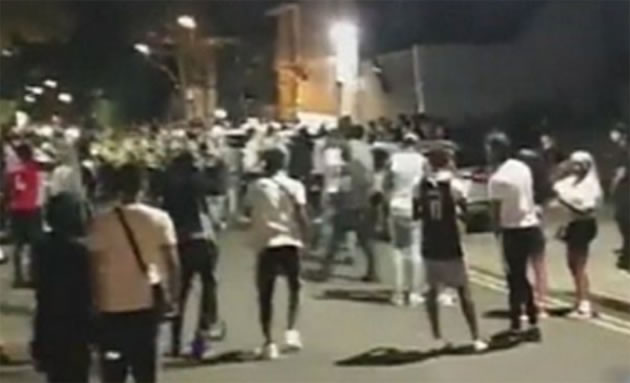Young Have Borough's Highest Covid-19 Infection Rate
Number of cases in Hounslow 'equally divided' between ethnic groups

Unlicensed music event during pandemic. Picture: BBC/Snapchat
Coronavirus cases in Hounslow have been “almost equally divided” between ethnic groups, its public health director has said.
Kelly O’Neill, the borough’s director of public health told the Local Democracy Reporting Service that according to borough data available, 35 per cent of cases were made up of white residents, while 33 per cent were identified as Asian residents.
A further category of ‘black, Chinese & other, mixed and unknown’ composed 32 per cent of cases.
Ms O’Neill said, “These figures for the borough of Hounslow are based on the data of those tested where ethnicity is indicated. It’s important when looking at these figures to remember that not all people who had the symptoms of the virus have been tested.
“Initial testing prioritised those residents with severe illness accessing hospitals and key workers and therefore this data may not reflect an accurate representation of people in the borough who have had coronavirus.”
The public health boss also revealed that the majority of coronavirus cases in Hounslow is likely to have been through exposure in residents’ homes and care homes.
Ms O’Neill said that around 80 per cent of cases, where the location information is known, points to this type of transmission – which is a “similar picture across London”.
As of Friday, August 28, analysis of age group profiles showed that the 20 to 29-year-old category had the highest number of cases in the borough.
Ms O’Neill said, “Information released by PHE [Public Health England] shows that in the last seven days in Hounslow there have been nine cases in the 20-29 year-old age group: the rate of infection in this age group based on these numbers is approximately 35 per 100,000.
“This is the age group with the highest number of cases, and similar to other areas, the second-highest number is seen in working-age adults (age 30-65).”
The details come as a rise in coronavirus cases seen across the borough in the last few weeks were confirmed to have slowed down to a “low and steady rate”.
Borough health bosses had previously warned residents that “large rises” of cases were being reported particularly across Heston, Hounslow Central, Hounslow West, Cranford and Chiswick.
Weekly data showed that the borough had 18.1 cases per 100,000 people between August 10 to 16, up from 13.3 for the week up to August 9.
But the latest week up to August 28 showed the rate drop to 10 per 100,000.
Council leader Steve Curran confirmed on Friday, August 28, the progress in containing the virus, and that the borough was below average for north west London in terms of positive cases.
He also revealed around 1,000 people had been tested for the virus in just two days at mobile testing sites in Heston and Hanworth as part of the drive to control the outbreak.
“I’d like to say a big thank you to the people in the affected areas, particularly Heston, Cranford and Hounslow, who responded quickly to our targeted communications and call to action, both in terms of abiding by social distancing guidance and getting tested locally,” he said.
“This demonstrates clearly how we can work together to control the spread of this deadly infection and protect our friends, family and most vulnerable residents. I also want to thank our Community Champions, faith leaders and voluntary organisations for their assistance in quickly sharing important information and advice with their communities.”
Cllr Curran added: “The recent rapid increase in cases is a harsh reminder that we can’t be complacent. The virus can spread rapidly and without symptoms; no one wants to be the one who makes a vulnerable friend or relative sick. Had we not taken swift action together we could have seen widespread community infection spread.
“We will continue to respond strongly and intervene quickly, though proportionately, to contain localised outbreaks. Increases can grow exponentially if left unchecked, spreading rapidly across the borough and putting more lives in danger and heightening the risk of a lockdown. The situation is monitored daily and we are kept abreast of the latest data provided by Public Health England. Further measures will be implemented if and wherever local outbreaks occur.”
The local authority leader also reminded residents that acting responsibly will become “more important” through the seasonal changes of autumn and winter as the cooler weather could lead to a resurgence in the disease.
“We should never forget how awful the situation was for many of our residents earlier this year. More than 230 people lost their lives and thousands of others became seriously ill,” he said.
For more information to get a test locally, click here.
To find out more about becoming a community champion click here.
Anahita Hossein-Pour - Local Democracy Reporter
September 1, 2020